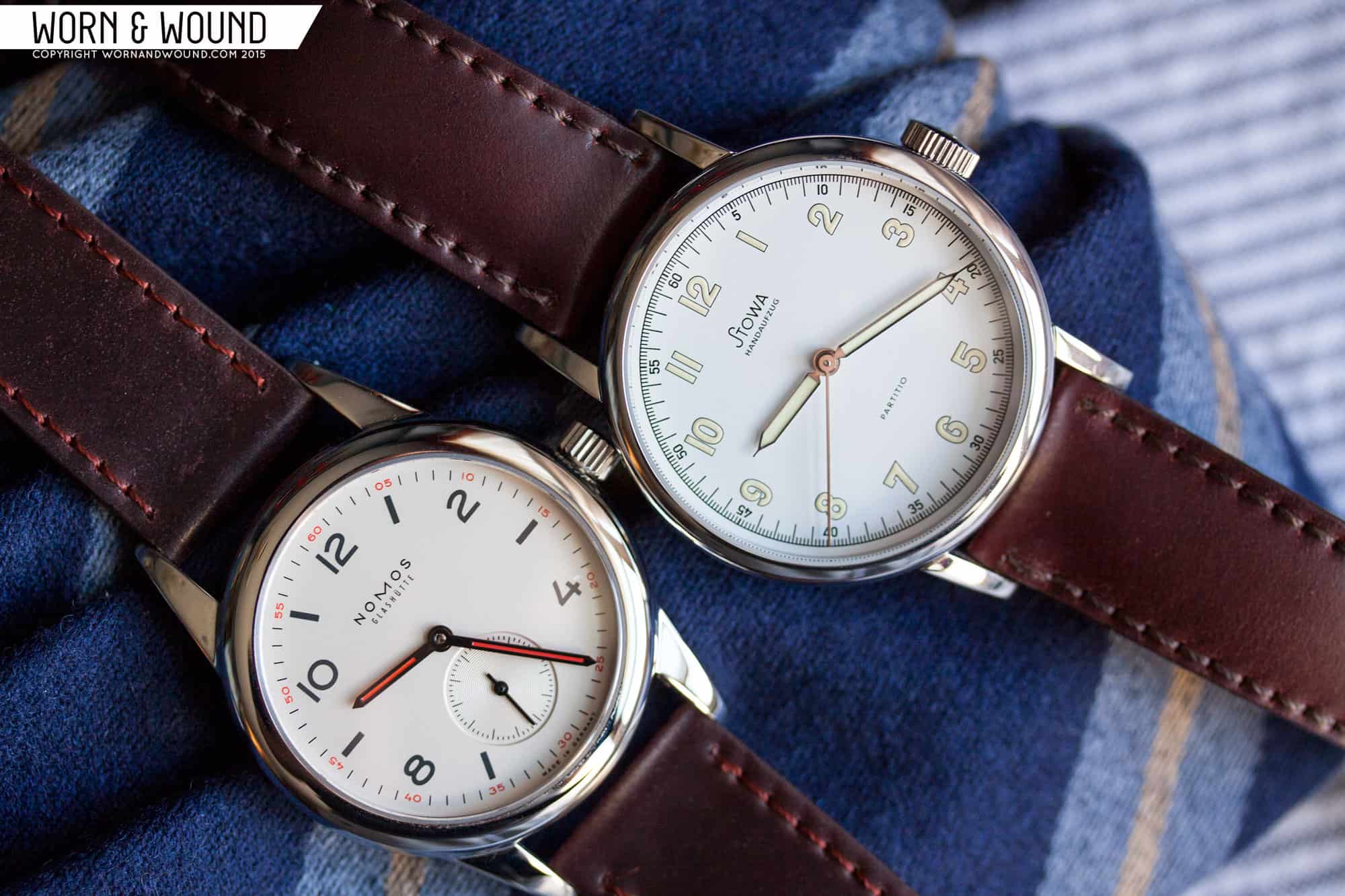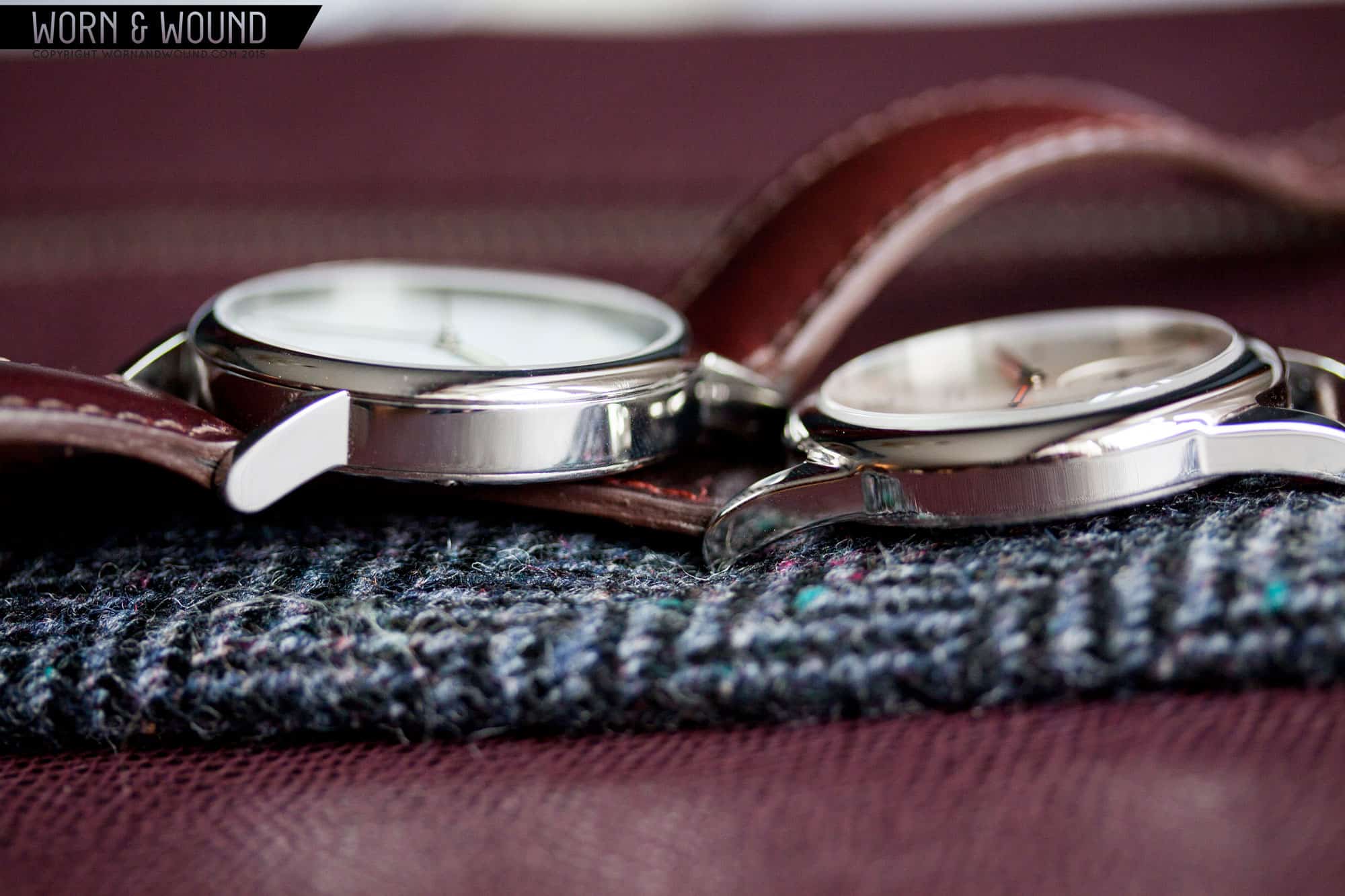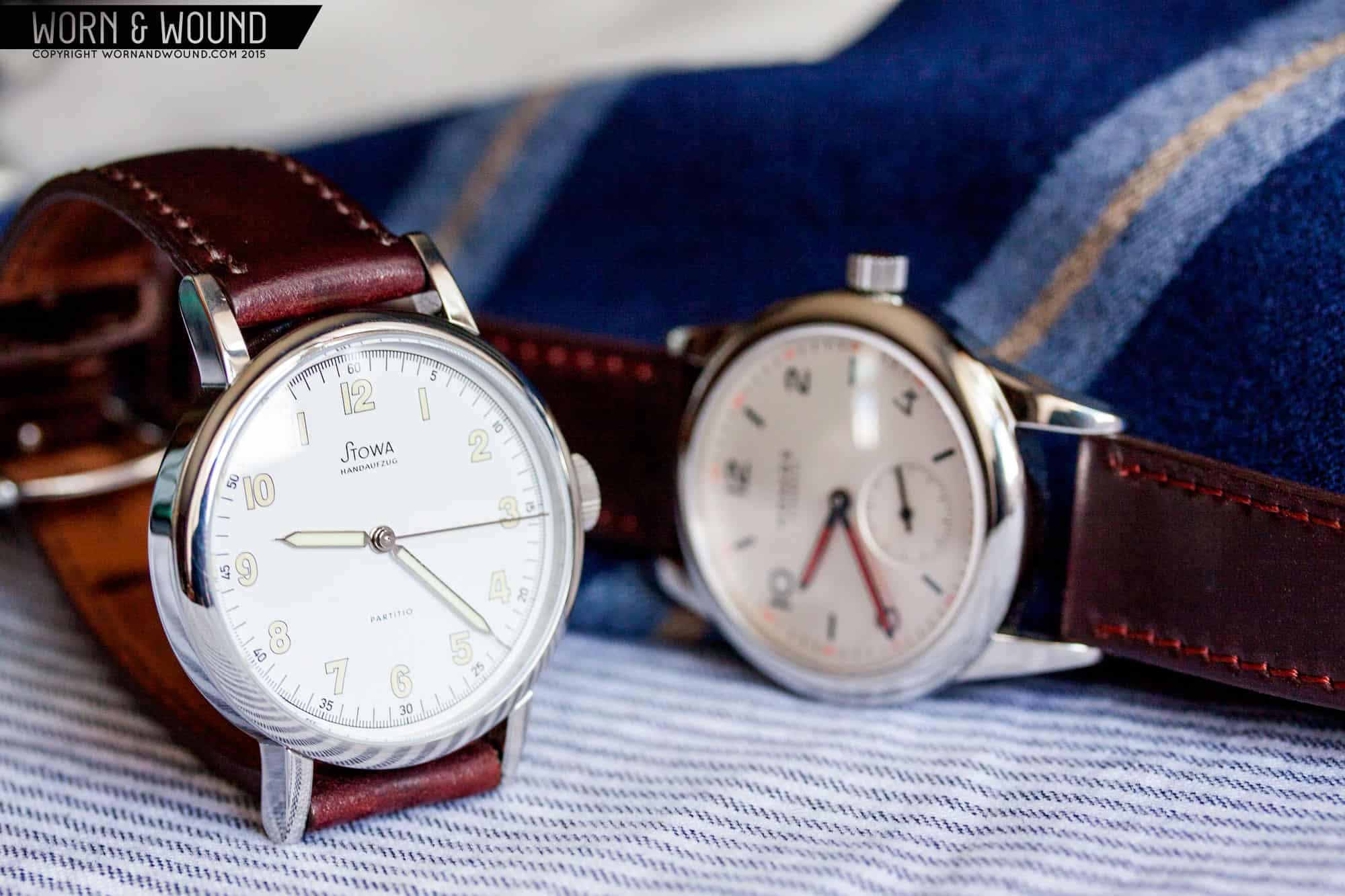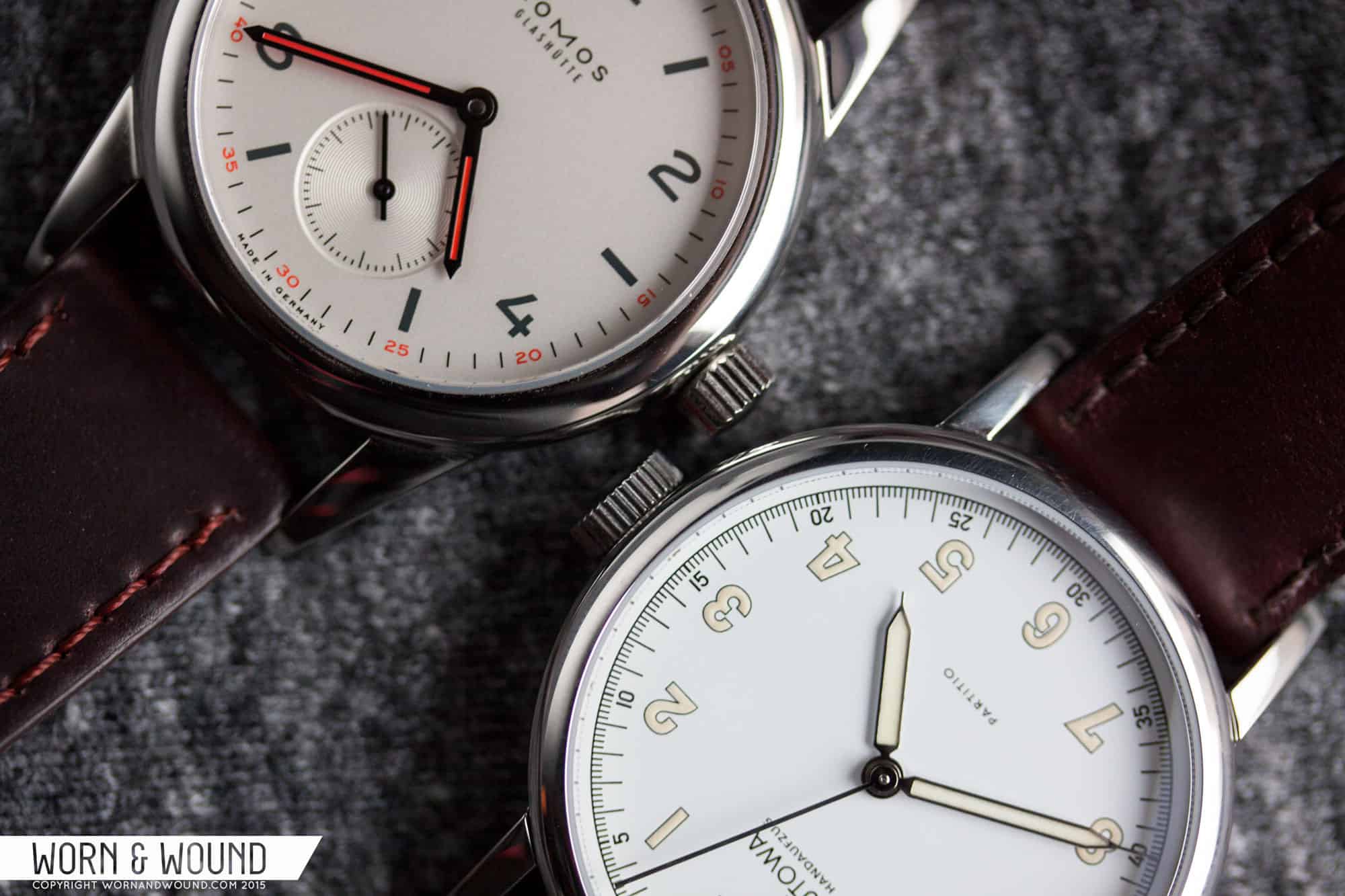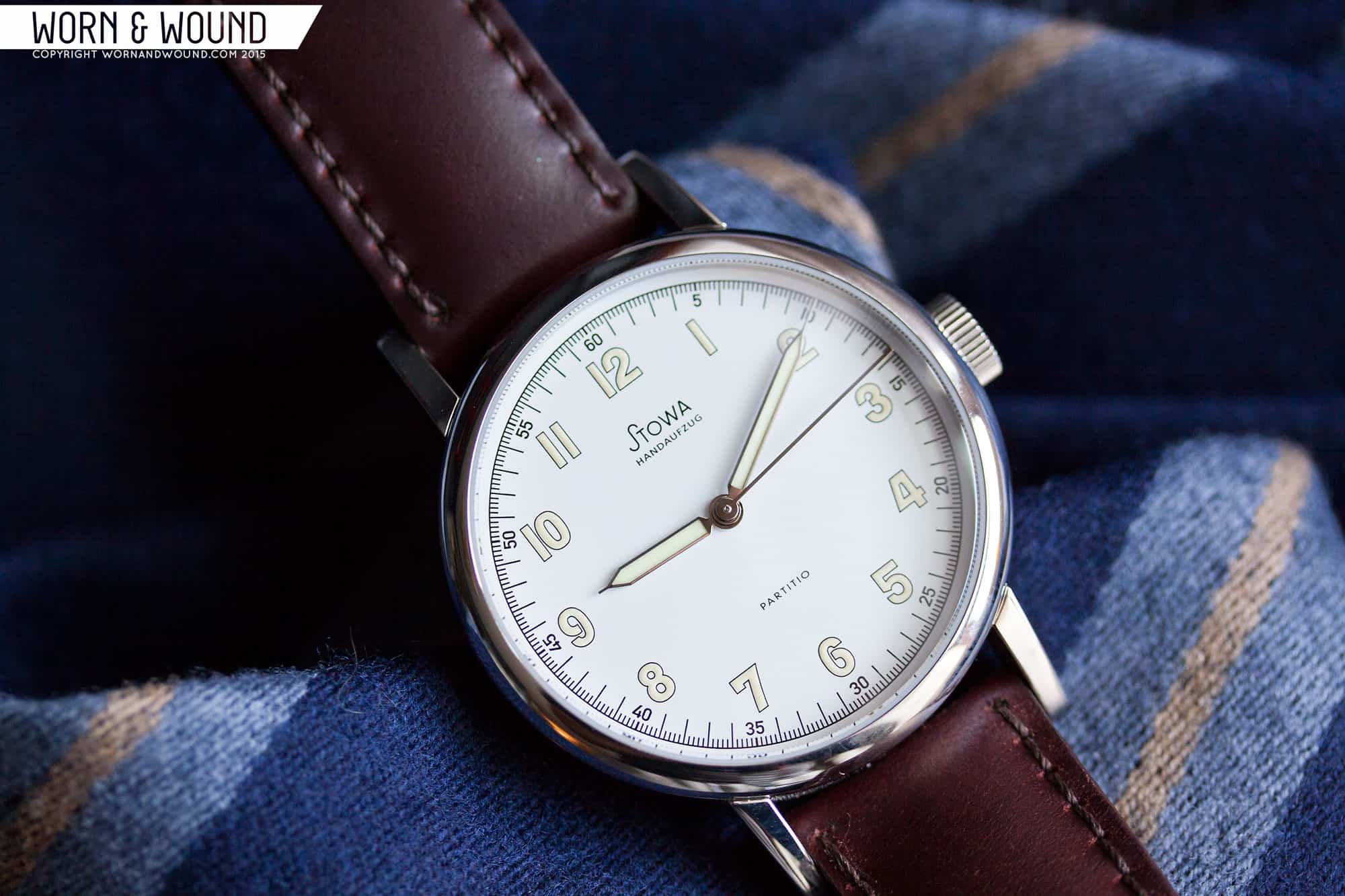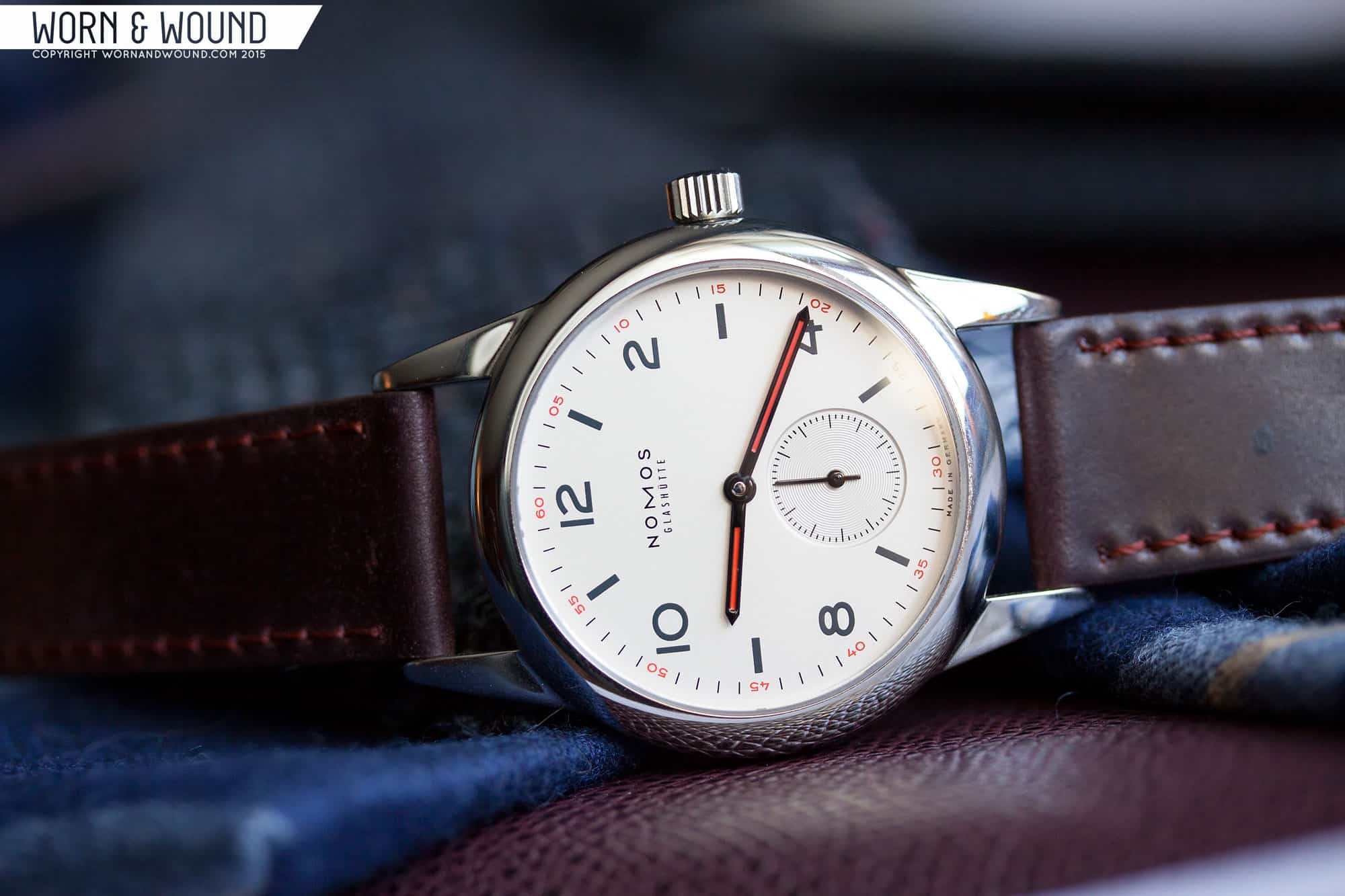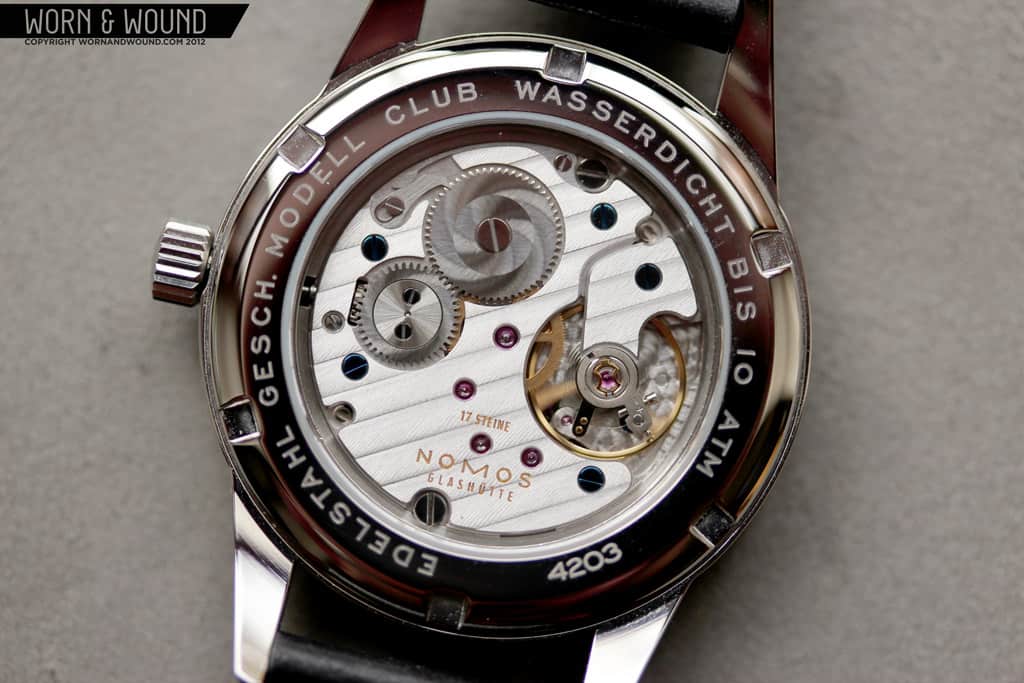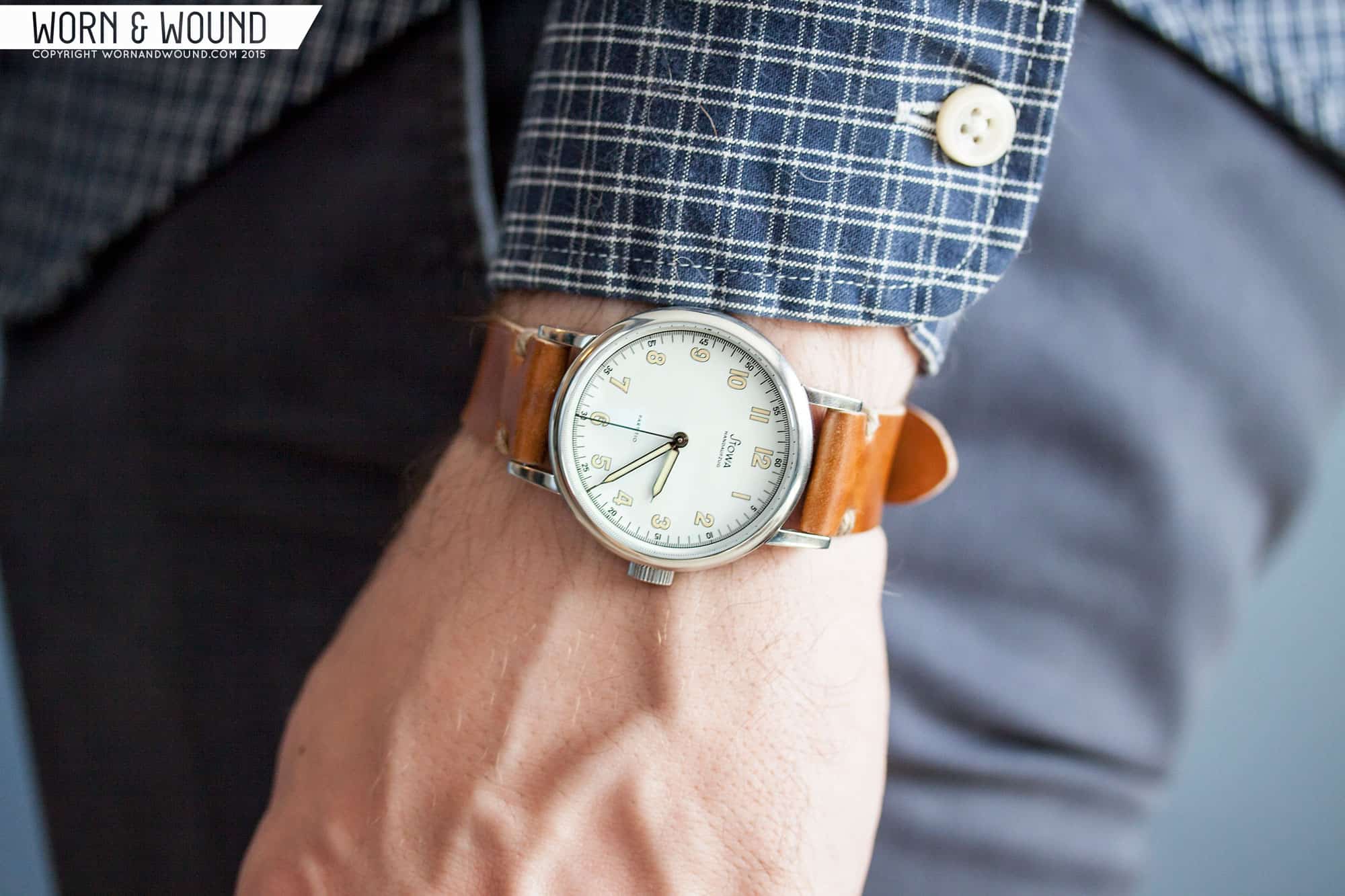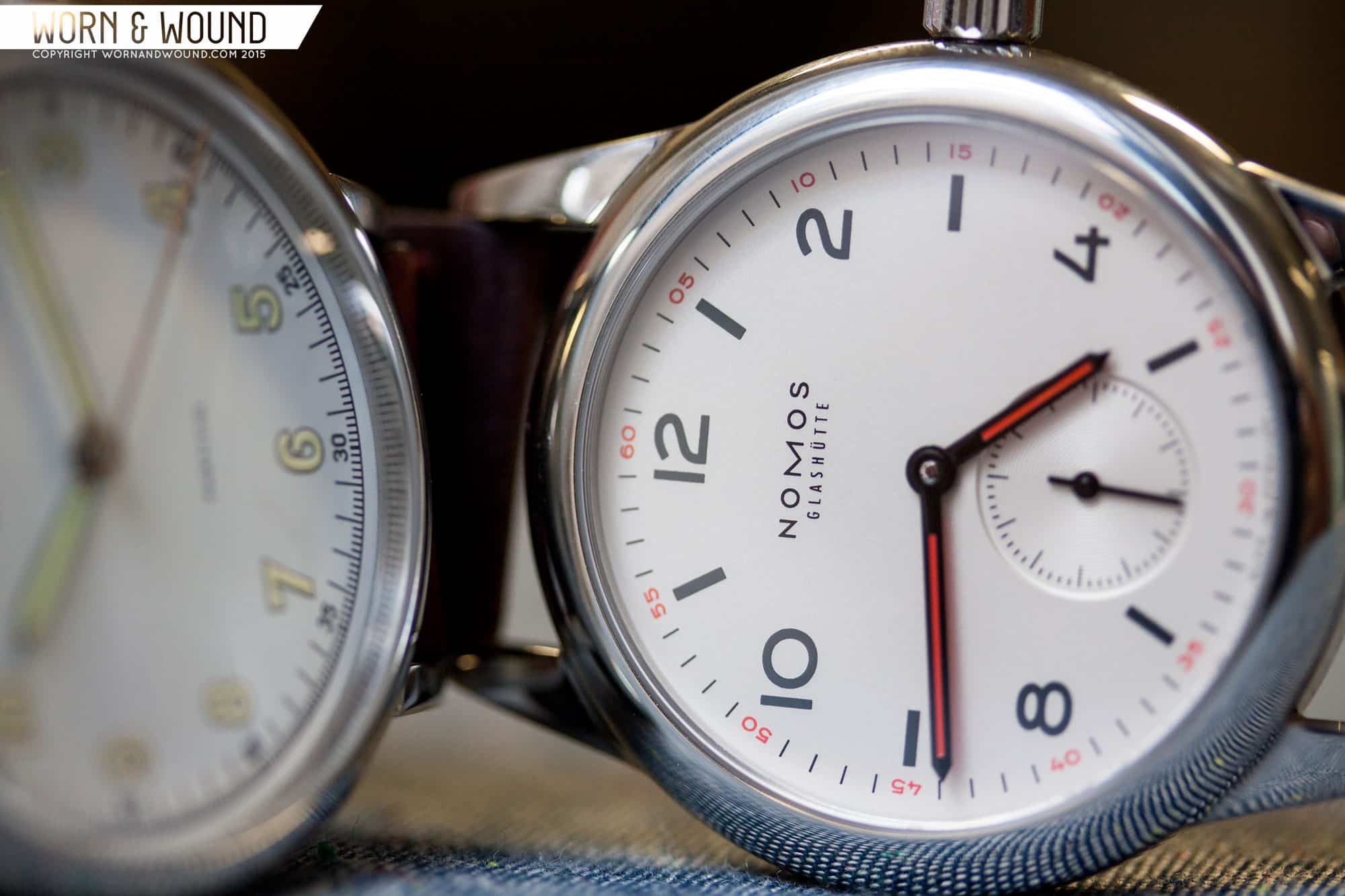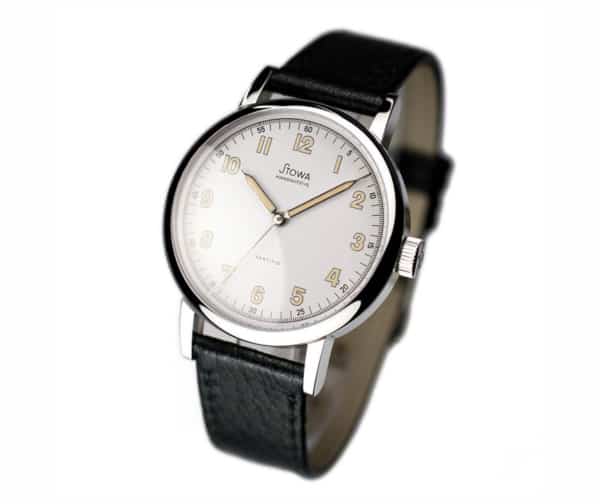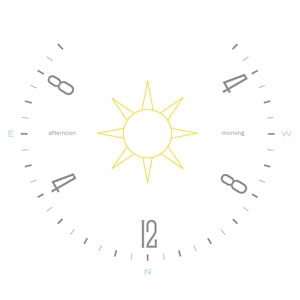Last week, we posted a photo on Instagram of the Nomos Club alongside the Stowa Partitio with the caption, “Two peas in a pod.” In doing so, we invited a string of comments evaluating the two, with people comparing their designs and arguing which one offers a greater value. If we learned anything from that post, it’s that people feel strongly about these two watches, which is unsurprising when you consider how passionate Stowa and Nomos fans are. And seeing as how both watches share a number of commonalities in design and in relation to their respective brands, we thought we’d give these two a side-by-side breakdown, taking a closer look at their cases, dials, movements, and wearability. Let’s get to it.
Case
The Nomos Club comes in at 36mm x 46mm, with a thickness of approximately 8.17mm. The Club is undeniably a small watch by modern standards, though its dimensions belie its wrist presence, with the long tapering lugs and thick bezel giving the case some added visual heft. The Club features what Nomos calls a stainless steel “bipartite” case, meaning that the bezel and mid case are actually one solid piece. The effect is quite attractive, creating a smooth transition between the bezel, case, and lugs–all of which feature a high polish finish.
Sitting atop the case is an ever-so-slightly domed sapphire crystal. It doesn’t sit flush with the case, but instead is slightly raised above the bezel creating a slight lip. In profile, the look–coupled with the curving lugs–harkens back to a vintage aesthetic. One thing to note is that the lug holes are positioned fairly close to the edge of the lugs, resulting in what some might consider a significant gap between the strap and the case. It’s a small detail that people often call out, but one that I find far less troublesome when the watch is on the wrist.
The Stowa Partitio has one millimeter over the Club, coming in at a width of 37mm with a lug-to-lug height of 47mm. It too is diminutive by today’s standards, but the Partitio appears larger on the wrist despite the nominal difference in dimensions. This is due primarily to the fact that the Partitio’s bezel is thinner, which gives the dial more real estate over the face of the watch. By my rough estimate, it wears a bit more like a 38mm watch.
The 3-piece stainless steel case on the Partitio is 10.8mm thick, so it is approximately 2.5mm thicker than the Club despite both having manual movements. There are likely two reasons for this difference. The first and most obvious is the height of each movement–the Nomos Alpha caliber (2.6mm) is notably thinner than the ETA 2801 (3.35mm) housed within the Partitio. But beyond that, Stowa likely uses the same case to accommodate the ETA 2824 which is used in the automatic version of the Partitio, so that accounts for approximately 2mm. The remaining difference might be related to hand clearance; the Club–featuring a sub-seconds layout–needs less vertical space than the Partitio, which has three centrally mounted hands.
Being that both watches are of the manual variety, we should take note of the crowns. The Club’s crown protrudes quite a bit from the case, allowing for a comfortable grip. Conversely, the Partitio’s crown is a bit shorter, but makes up for that by being significantly larger in diameter. Regardless, both crowns are easy to wind, even for those of us with larger hands.
Flipping the two watches around you will find two stainless steel case backs with the specs lightly etched into the metal. The significant difference between the two is that the Club features a screw down case back, while the Partitio’s is attached via 6 screws. Both watches are available with exhibition case backs upon request, with Stowa recently announcing that they will be replacing the 2801 with Sellita’s well-regarded SW210 mechanical equivalent. It’s a welcome change, and one that doesn’t come at a much greater expense.
Dial
The white-dialed Club is actually silver, with older versions of the dial featuring a sort of flat cream color (the transition was made some time in 2013). The prominent hours index is printed in black, with each hour shown via alternating rectangular hash marks (odd) and Arabic numerals (even). Along the outer edge of the dial is a finely-printed minutes index, which is broken up into tiny lines and numerals at intervals of 5 minutes, starting with “05” and ending with “60.” This is also where we have a splash of color, with the minutes printed in red-orange. This is carried over to the hands, which are framed in gloss black and have painted centers using the same red-orange hue. At 6 o’clock, there is a seconds sub-dial featuring very fine concentric circles.
The design of the Club is probably the most “normal” one offered by Nomos, but I mean that as praise and not as derision. It is a versatile dial with a nice blend of references; it is dressy and sporty, elegant and playful, and it has the perfect touch of military influence. There is not a lot of negative space here, which can be the case with other watches from the brand. All the elements feel well placed and balanced, and there is nothing missing from the watch, nor is any detail extraneous.
The white-dialed Partitio, unlike the Club, is true white with a fine eggshell-like texture. Contrasting the stark white of the dial is an hours track generously coated in peach-colored Old Radium Superluminova. Like the Club, the Partitio also has an outer minutes track (though in this case, it’s also a seconds track) with numerals at intervals of 5. This index further divides the markings into 1/5th of a second, a visually pleasing detail that hints at a military and field-watch heritage. (Plus, it is where the Partitio gets its name, with “Partitio” being Latin for partition.)
The vintage Bauhaus-inspired typeface is one of my favorite features of the whole design. It is incredibly well proportioned, and I especially like the way the “6” and “9” do not complete their loops. The syringe styled handset is an ideal match to the dial. They’re polished and nickel-plated, which give them a softer look than what one might find with just stainless steel.
Both Stowa and Nomos should be praised for achieving such precise printing on their dials. Everything is done with exactness and care, from the brand insignias down to the tiniest of dashes. Stowa achieved an especially fine product, somehow managing to pack generous amounts of luminous material inside such finely printed numerals. Speaking of lume, I do think the Club’s complete lack of the bright stuff is a bit disappointing, and Nomos’ missed opportunity here means that the Club is unfortunately a bit of a dud at night. In contrast, the Partitio is an absolute torch.
Movement
As some of you may well know, the Alpha movement from Nomos is their most basic manual caliber. It is based on the venerable Peseux 7001, but reverse engineered, modified, and manufactured in-house by Nomos. This 17-jeweled movement is incredibly precise–adjusted by Nomos in 6 positions–and features a decentralized seconds layout, a stop-seconds mechanism (hacking), and a solid 43hr power reserve. The movement is unsurprisingly a joy to wind, with just the right amount of tension.
The 2801 is ETA’s hand-winding caliber–the manual brother of the staple ETA 2824. It’s workhorse movement that, while unrefined, has proven itself time and time again on the market. The Sellita SW 210 is intended to be a drop-in replacement for the 2801, which is increasingly harder to source, and I expect similar performance from the former (Sellita was at one point a subcontract for ETA, so their technical know-how is undeniable).
But to be perfectly frank, it is an exercise in futility to compare the two. The Alpha caliber is undoubtedly the nicer movement with a much more interesting pedigree and finishing. That fact, however, is reflected in the price, so that’s certainly one thing to consider when looking at both movements. I think for the price-conscious consumer, eschewing an in-house caliber is no big deal since you are still walking away something incredibly robust and reliable.
Straps and Wearability
Both watches wear extremely well and are partial to a number of different straps, from nylon slip-throughs to shell cordovan leather straps. The Club comes with a brown Horween shell cordovan strap accented with red contrast stitch. I am normally not a fan of contrast stitch, but the effect here is surprisingly subtle. For those who haven’t tried a shell cordovan watchstrap, get to it. Shell cordovan is extremely comfortable and breaks in almost immediately, and it has superior resistance to sweat so it will not stink up your wrist. Also, shell patinates beautifully over time, so your strap is only going to get better with age. Both watches featured in the gallery are paired with shell straps.
In terms of versatility, I’d have to give the edge to the Club. The elegant case paired with the silver dial makes it a touch more elegant than the Partitio, but only by a hair. With that said, I would comfortably wear either watch with a suit or a tee shirt and jeans.
Conclusion
If you are looking at both watches and cannot decide between the two, then I have a feeling this side-by-side just made things even harder. They’re both great watches, and you really cannot go wrong with either one. But if money is a primary concern, then the Partitio is a no-brainer. At approximately $695, it presents an incredible value. If money is not a major concern and you can afford the Club, then you’re getting a great German-made watch with an in-house caliber for an unbelievable price. At $1550, the Club is undoubtedly one of the greatest gems within the realm of affordable luxury watches. But most importantly, just go with the watch that speaks to you most and ignore the hype from either camp.









 Featured Videos
Featured Videos




